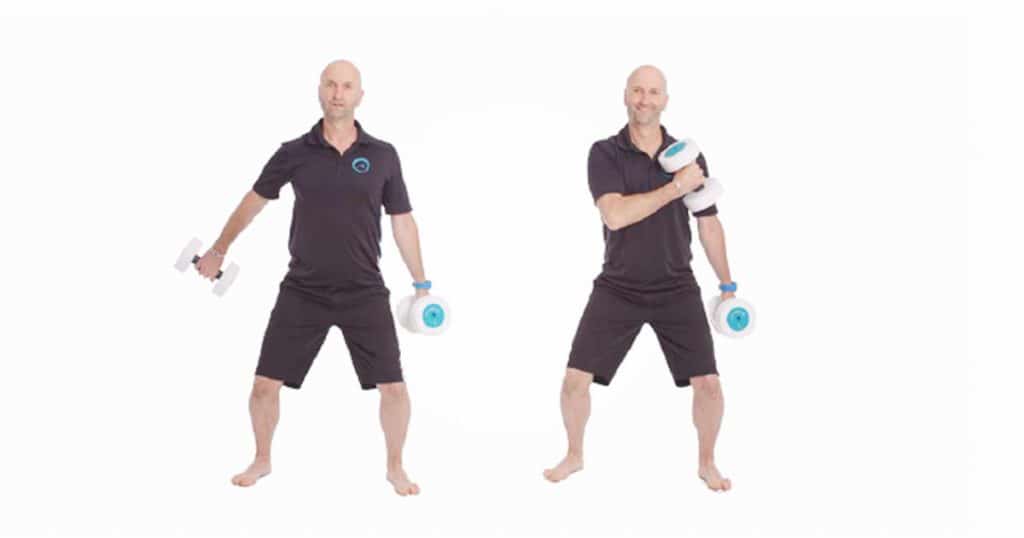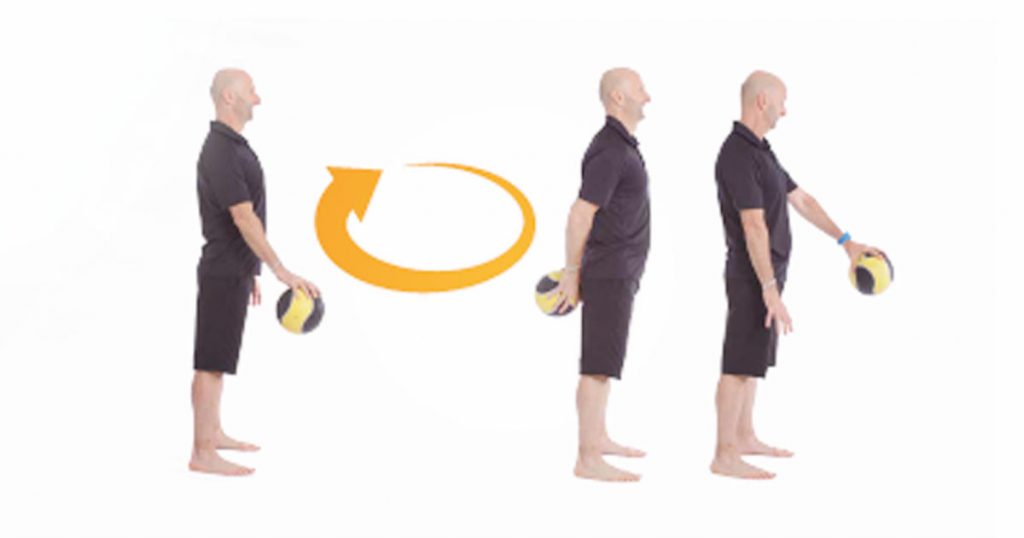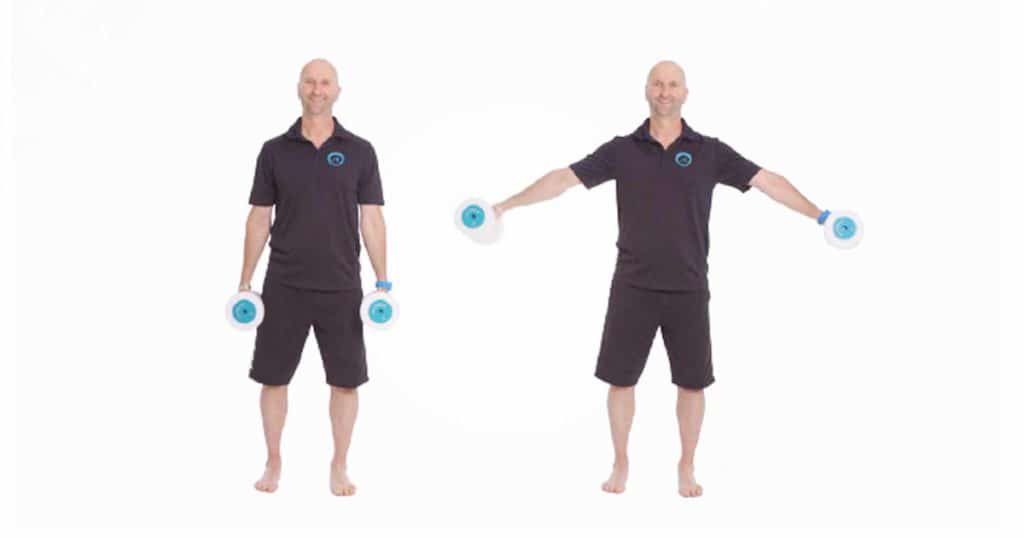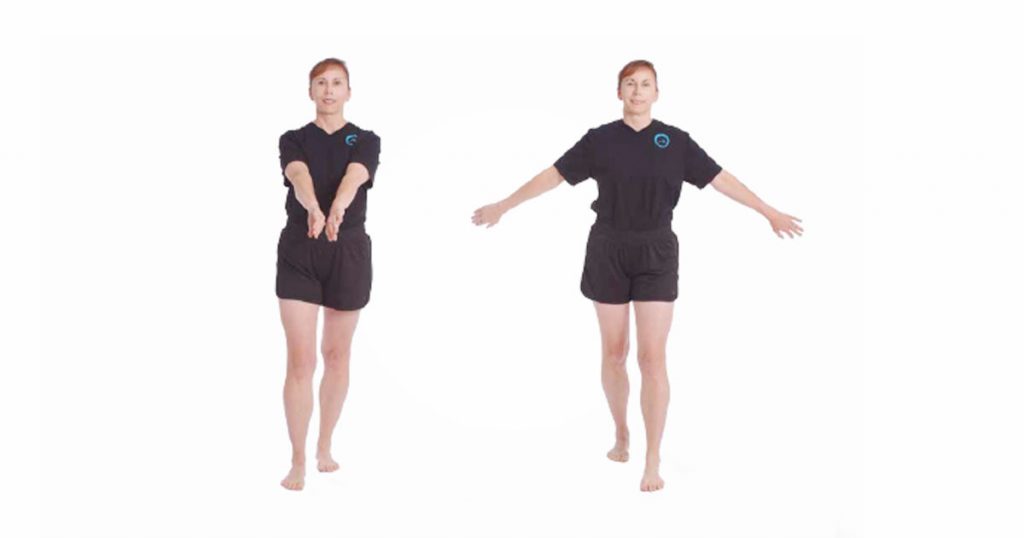We carry a lot on our shoulders — literally and figuratively. While it’s a relatively small muscle group, we rely on the shoulder girdle to help us do day-to-day activities and the things we love, like swimming and weightlifting.
But the shoulders are prone to dislocation and injury. Why? The muscle group has a high range of motion.
According to a study that was updated in 2020, 18 million Americans suffer from shoulder pain each year. Much of the pain can be a result of rotator cuff tears, which “can occur from a mix of trauma, overuse, or age-related degeneration.” Athletes can be at particular risk of shoulder injury because of the repetitive nature of their sports.
People who have rotator cuff injuries often experience pain during overhead activities. While surgery might be necessary, treatment for shoulder injury often begins with drug therapies, rest, and physical therapy exercises.
In a recent Facebook Live event, Master Spas swim spa specialists Ben Gilliam and Mari Cuticelli talked about the benefits of aquatic therapy. A swim spa by Master Spas offers a convenient, safe space to exercise — especially for those who are rehabbing a shoulder injury. Water’s natural buoyancy helps you move pain-free and perform physical therapy exercises with increased range of motion. And a swim spa has an easy-to-use touchscreen panel for adjusting the water temperature, which can be set to a therapeutic 92 degrees Fahrenheit.
Benefits of Aquatic Therapy
Aquatic therapy takes advantage of the natural properties of water and warm water to help people exercise and move.
Water has a natural resistance — about 700 times more dense than air, Gilliam says. Just moving your arm in the water is more work than lifting it on land.
It can be challenging to overcome a shoulder injury with land-based exercises. Chronic pain associated with the injury can cause stress and anxiety, as well as affecting your mood. It’s hard to want to exercise when you fear that it will make the pain worse.
Cuticelli says that people are often more willing to work out and do therapy exercises when it’s in the water. The natural buoyancy of water improves mobility and flexibility so that you can move pain free. The warm water, too, helps by relaxing the muscles and increasing circulation.

How to Exercise in a Swim Spa
An alternative to the traditional in-ground pool, a swim spa is an at-home exercise pool with the added benefit of hydrotherapy.
The obstacle-free swim area has an endless swim current that can be adjusted based on how you are feeling and your fitness level. For aquatic therapy, it can be turned off or set to a low speed as you walk, swim, stretch, and exercise.
Select models have an increased water depth so that you can maximize the benefits of water’s buoyancy. When you exercise in chest deep water, the effect gravity has on your body is reduced by 90 percent. It’s as if a 150-pound person weighs 15 pounds, reducing the stress on the joints and lessening impact.
Swim spas from Master Spas also come with the H2Xercise Fitness System. The kit includes rowing bars, dumbbells, and resistance bands designed to maximize resistance training in the water. For shoulder rehab exercises, the resistance bands and aquatic dumbbells are particularly helpful.

5 Water Exercise for Shoulder Injuries
Perform each exercise for 30 to 45 seconds, with the goal to progress to 60 or 90 seconds. Remember to repeat on each side.
Pass Behind Back with Ball
Grasp an exercise ball in your left hand, with the arm slightly outstretched. Move the ball behind you and grab it with your right hand. Reach your right arm out in front of your body, mindful not to break the surface. Be sure to stand tall, with your chest up and core tight.
External Rotation with Resistance Band
Stand tall with your core and glutes engaged. Chest is up and shoulder blades are squeezing together. With your elbows tucked in at 90 degrees, grip the handle of the resistance band. Rotate your arm away from the body while maintaining the bend in the elbow. Perform on both sides.

Lateral Raise
Hold an H2Xercise dumbbell in each hand. Engage your core and glutes as you stand tall. With a slight bend in your elbows, raise the dumbbells out to the side without breaking the surface.
Diagonal Arm Raise
Grasp the H2Xercise dumbbell in your right hand with the palm facing down against the left thing. Move the dumbbell upward, away from your body, as if you were drawing a sword Return to the start position. Be sure to stand tall and squeeze the shoulder blades together.

Walking Breast Stroke
Stand tall with your arms out stretched. Move your arms slowly through a full range of motion, being mindful not to rock your body. Walk in place or take advantage of the endless water current, using a low setting.


